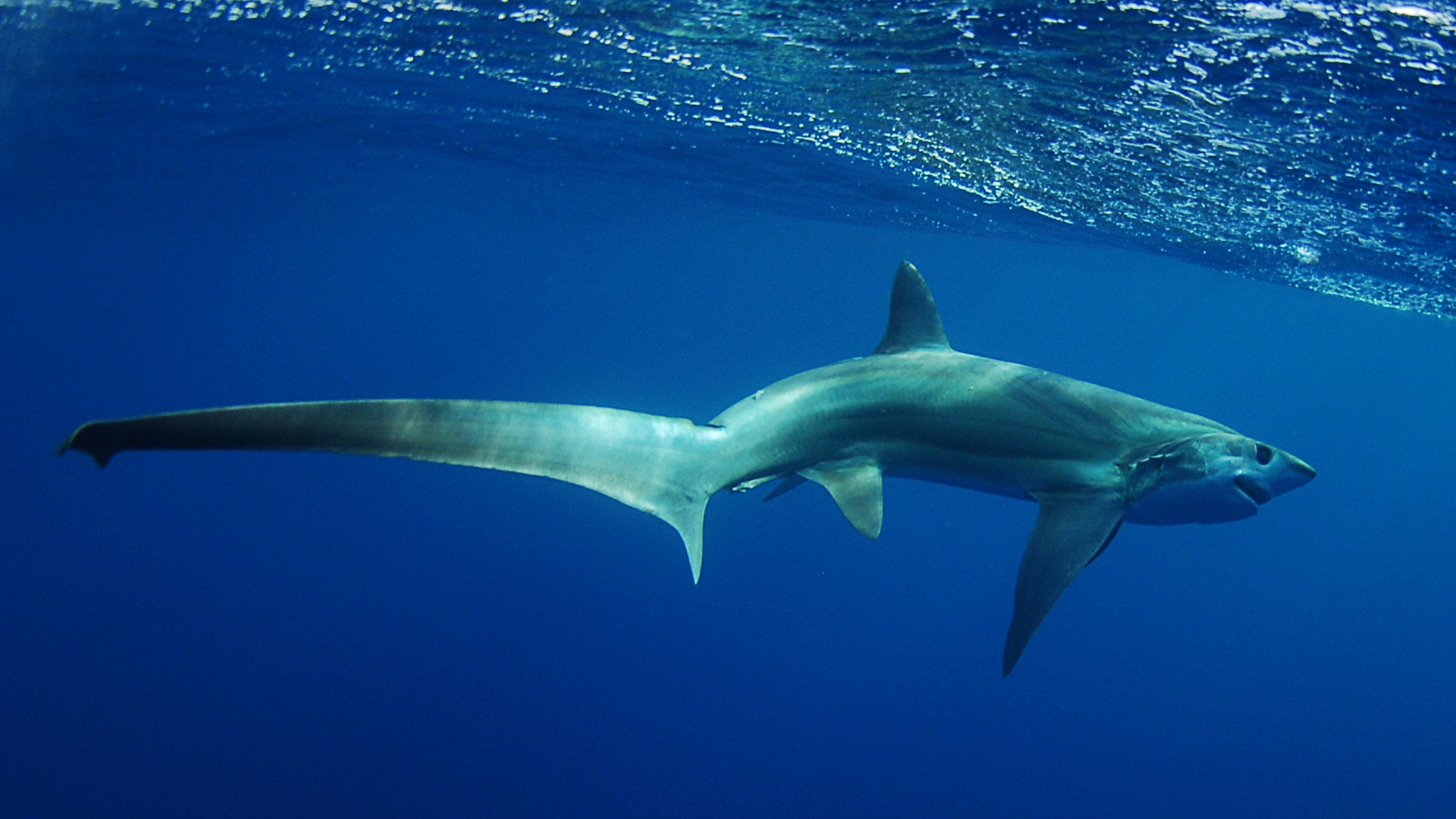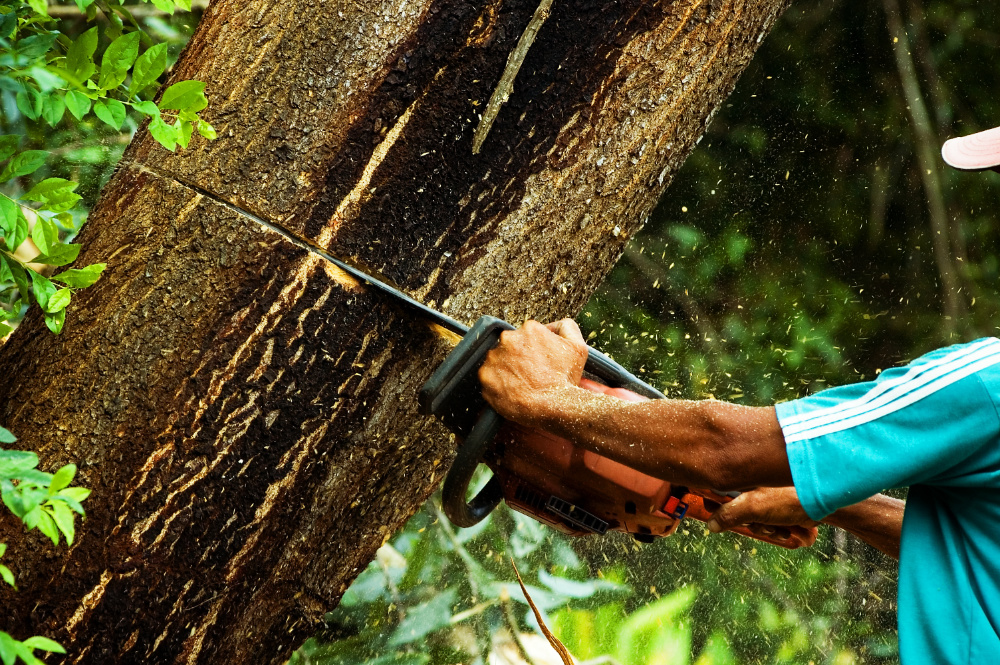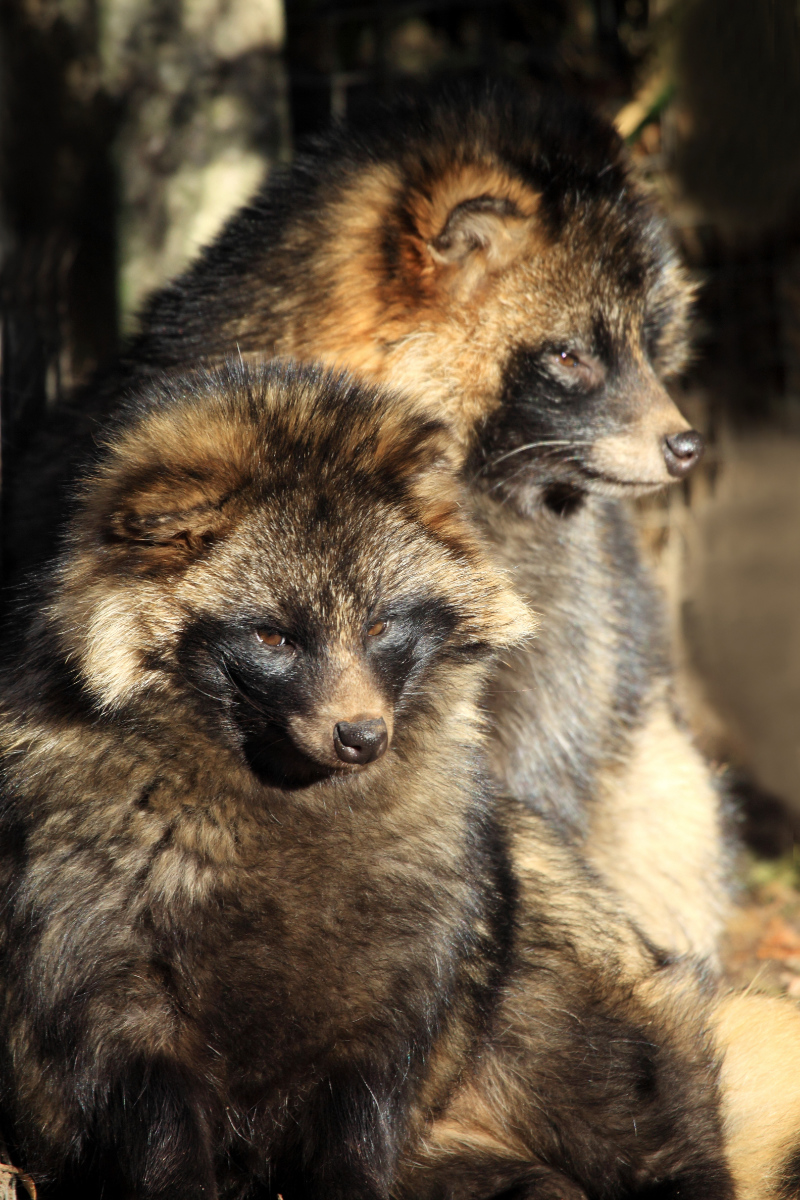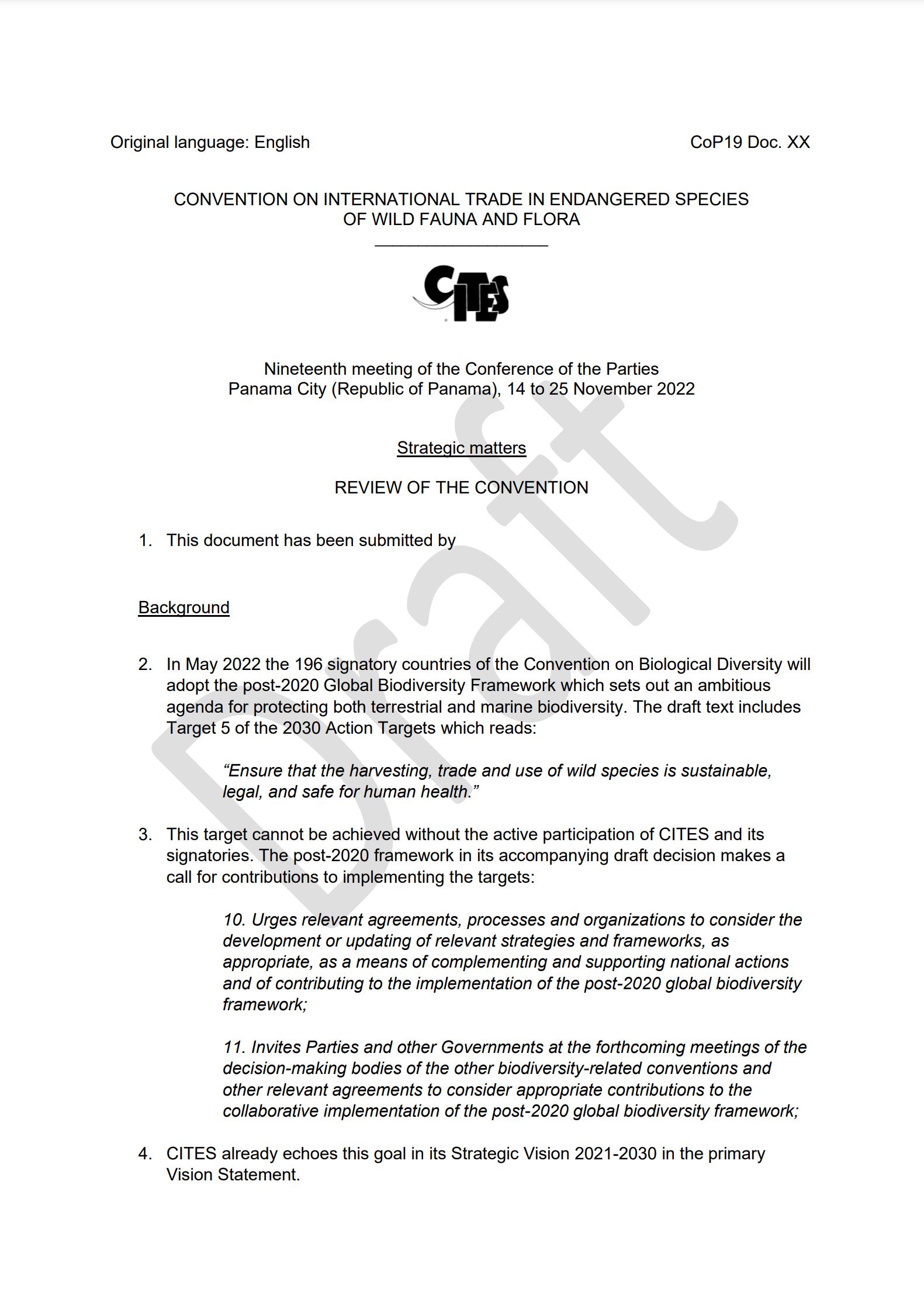
It is time to accept that the current system of protecting species from over-exploitation by commercialising them is not working and hasn’t for some decades.
The problem with regulating the legal trade in wild species and protecting species from extinction through trade is that the underlying basic assumption of the design of the CITES system, which was done in the mid-1960s, no longer applies. At the time, the perception of abundance and of low trade volumes led to the justification that the default could be ‘to trade’ in endangered and exotic species and only to apply restrictions when there is evidence of over exploitation because of the legal trade.
Today the focus of conservation bodies is mainly on illegal fishing, illegal logging and the illegal trade in wildlife, basically clinically sidestepping the many problems associated with the legal trade as a result of the assumptions made 60 years ago. While these problems have for too long been ignored, they were identified early in the history of CITES.
In 1981, the Australian delegation made a submission to CITES CoP3, just six years into CITES operation, proposing that the international trade in wild species should move to a default of no trade (known as reverse listing, whitelisting, positive lists, or clean listing). Moving to a reverse listing approach would mean that before trade could occur businesses (or industries) would have to pay for and do the research upfront to prove they understood what constituted a sustainable offtake and also demonstrate that they had all the necessary supply chain governance in place to effectively manage trade volumes at a level where they are ecologically sustainable.

Why did Australia make this submission in 1981? The submission states:
“This resolution identifies the problems arising from continuing additions to appendices and recommends that the principle of “reverse or clean” listing be adopted by CITES to replace the present appendices. Such lists would comprise only those species which have been proposed for commercial trade by a Party and for which there is agreement that a sufficient level of knowledge, management and control exists to ensure that the proposed trade will not threaten the species survival. The onus would be on the proponent to provide these data to the Conference of the Parties and a proposal would be dealt with in a manner similar to that presently adopted for appendix listings.”
Australia’s proposal was not adopted as other countries failed to see (or didn’t what to admit) the future implications from growing trade volumes and the number of CITES listed species. At the time, in 1981, CITES listed only 700 species for trade restrictions out of an estimated 10,000 species being traded internationally. The U.S. commissioned a study on the reverse listing proposal and rejected it based on the increase in time and money cost of compliance and because doing so would reduce the focus on the 700 species actually needing protection. CITES now lists nearly 40,000 species on its appendices.
The CITES system was left to expand and to grow unrestrained, to the point where there are too many species, not enough control and too few resources. Everything the 1981 Australian submission warned would happen has happened. CITES cannot be fixed under the current model and with increasing extinction risks the number of listed species is only ever going to increase. Moving to a reverse listing model may be much harder today because of the complexity of the listing and trade system, but it is our only chance to fix the legal trade in wild species, which is a key driver of decline and extinction risk.

A move to a reverse listing model would mean that CITES would regulate the international trade in ALL wild species, including the international fishing and timber trade. Yes, regulation would cost more than it currently does and currently CITES is impoverished to the point of being meaningless. The poor-quality data CITES has produced for decades means the most basic reconciliations across the supply chains are impossible and CITES data cannot provide proof of sustainability in the legal trade of the 40,000 species listed. Businesses have not been paying the cost of regulation and have been allowed to ignore CITES failings together with the fraud and laundering in their supply chains.
Businesses know that there is green crime in their supply chains. A 2020 report by Refinitiv (one of the world’s largest providers of financial markets data serving over 40,000 institutions in 190 countries) highlights the scale of supply chain risks going unreported. The survey revealed that a substantial 65% of respondents know or suspect that third parties they conduct business with may have been involved in a range of illegal, environmentally damaging activities.
Only 16% of respondents say that they would report a third-party breach externally and only 53% said they would report it internally. The reason moving to a reverse listing model is critical is that 63% of respondents agreed that the economic climate is encouraging organisations to take regulatory risks in order to win new business. Independent, mandatory regulation must be made to work if the trade in wild species is to remain.
The Refinitiv report again confirms why it is so easy to launder illegal product into the legal supply chain and marketplace.
Since 2018, Nature Needs More has tried to get the reverse listing model back on the CITES agenda, speaking with the Secretariat and over 30 CITES signatory countries. Reverse (white) listing means businesses would have to shoulder the burden of proof that trade in a species can and will be ecologically sustainable before any trade can commence. All the costs of regulation would be covered by a business levy.
Nature Needs More suggested an annual listing fee (levy) for traded species to be set at 1.5% of the value of the trade. This would generate many billions of dollars annually for regulation, not the pitiful US$6.2 million dollars CITES currently receives. Key is that this funding comes from the businesses who profit from the trade, so no CITES signatory government would need to cover the compliance cost. The cost burden would be shared by all businesses in the supply chain, with those profiting the most paying the largest share.
This would stop the international, commercial trade in some wild species. Under the current model’s all profit no responsibility approach some trade is only marginally profitable; trades in these species would stop as they would no longer provide a return on investment. We should point out that our reverse listing model would not affect cultural trade, which is mostly domestic, and for which exemptions were included for low-value trades.
Maybe this levy is the first indicator of why a reverse listing model hasn’t been implemented because it would make it easy to regulate business directly and, as a result, force them to cover the costs of regulation. The CBD CoP 15 negotiations of December 2022 laid bare business’ lack of willingness to cut into their profits. African countries proposed a 1% biodiversity levy on the retail price of all products based on genetic data in a digital form – known as digital sequence information (DSI) with proceeds going to biodiversity conservation around the world. Rich countries refused, no doubt at the behest of companies.
The extra costs of regulation of a reverse listing model are easily solvable, with a small levy on business, and I have to say this wasn’t the key reason why signatory countries weren’t open to such a model. In all these discussions with CITES signatory parties we were only given two reasons why this couldn’t be done now:
- Changing the model today is going to be very difficult because of the lack of goodwill towards the West (or global North) from the global South.
- The powerful global fishing industry has and would continue to resist attempts by CITES to regulate the commercial trade in marine species.
So, let’s look at these two reasons in a bit more depth.
The lack of goodwill towards the global North from the global South
Of course there is a lack of goodwill towards the global North from the global South, you just have to read Jason Hickel’s The Divide to understand why. As he says, “poverty doesn’t just exist, it has been created”, continuing, “Poor countries are poor because they are integrated into the global economic system on unequal terms. The aid narrative hides the deep patterns of wealth extraction that cause poverty and inequality in the first place: rigged trade deals, tax evasion, land grabs and the costs associated with climate change”. The Divide tracks the evolution of this system, which has allowed a handful of rich countries to effectively control economic policies in the rest of the world.

It is the handful of rich countries that need to reset their moral compass because it is their lack of ethics which are enabling biodiversity loss and the extinction crisis in order to generate mindboggling profits for the few.
Powerful global fishing industry resists attempts to regulate the commercial trade in marine species
Of course the global fishing industry will push back against any attempt of being fully regulated by CITES, despite CITES having the responsibility to do so under its articles. IUU fishing is practiced mostly by wealthy countries and fleets. Companies are not even penalised for vessels going dark! All this has meant is that the 2019 IPBES Report confirmed that direct exploitation for trade is the most important driver of decline and extinction risk for marine species.
Maybe if the commercial fishing fleets of wealthy countries, which together make up 92% of the global catch, had their catches confiscated on their return to ports for going dark or had their insurances and licences revoked, they would realise that they can no longer dictate terms.
Can we move to a Reverse-Listing Model? Undoubtedly Yes
After researching regulatory models in other industries and the history of regulatory failures to draw conclusions about the suitability of the basic building blocks of the current CITES framework, in 2021 Nature Needs More published a detailed model of how to modernise CITES, including how it could be adequately funded at the scale needed to regulate, monitor and enforce the legal trade in ALL wild species.
In addition, we created a draft submission for CoP19 requesting a working group be set up between CITES CoP19 and CoP20 to study our proposals and make recommendations on how to improve the regulation of the trade and the lack of resources available to monitor and enforce its provisions. We even got a philanthropist to pledge US$500,000 to cover the cost of the 3-year CITES working group and review, as long as it went ahead in such a way that it wasn’t a greenwashing exercise. We took this submission to a number of CITES signatory countries, but no country we approached wanted to table it.
Since 2018, when Nature Needs More started the push to move to a reverse listing model a lot has happened in the world, most notable a global pandemic zoonotic in origin. For decades some of the world’s leading epidemiologists have been expecting such a pandemic. They knew that humans were vulnerable because the line between us and exotic animals had long been breached for trade purposes. And despite a regular outcry over the illegal global wildlife trade, until recently the legal trade has, for the most part, gone unquestioned. The result is that out of sight and without any real checks a half-trillion dollar trade in animals and plants flourishes. According to the United Nations, even before the pandemic this trade was growing at two to three times the rate of the global economy. Yet, even after the pandemic hit, the OneHealth initiative, which proposed using a reverse (white) listing model for the trade in live specimen, did not get off the ground.
Part of the reason that such an immensely sensible change was not made, even after a 3-year global pandemic that killed millions of people is that too many countries are not agreement capable at the moment, for the reasons mentioned above. In addition, the trade and power dynamics in the world are shifting. The West has lost its undisputed leadership role and is floundering and the BRICS+ countries have started to step into the leadership void and are now setting up separate trade and financial systems as they de-dollarise. But the dominant systems are still those created by the West, including CITES. Only once the West accepts the transition to a multi-polar world order will we see any progress on international regulations.
We can only hope that this shift occurs before it is too late for wildlife and the natural world more broadly. Species loss is accelerating, and trade is not the only risk, conversion of land use to agriculture and climate change are also not being addressed at present.
CITES can play a big role in saving species from extinction, but not in its current form. In order to make the trade in wild species ecologically sustainable, the CITES model must default to no trade, and businesses need to shoulder the cost and burden of proof. This means moving to a reverse listing model. The quicker we can get this process underway, the better the chance of tackling the extinction crisis before it triggers a collapse.



